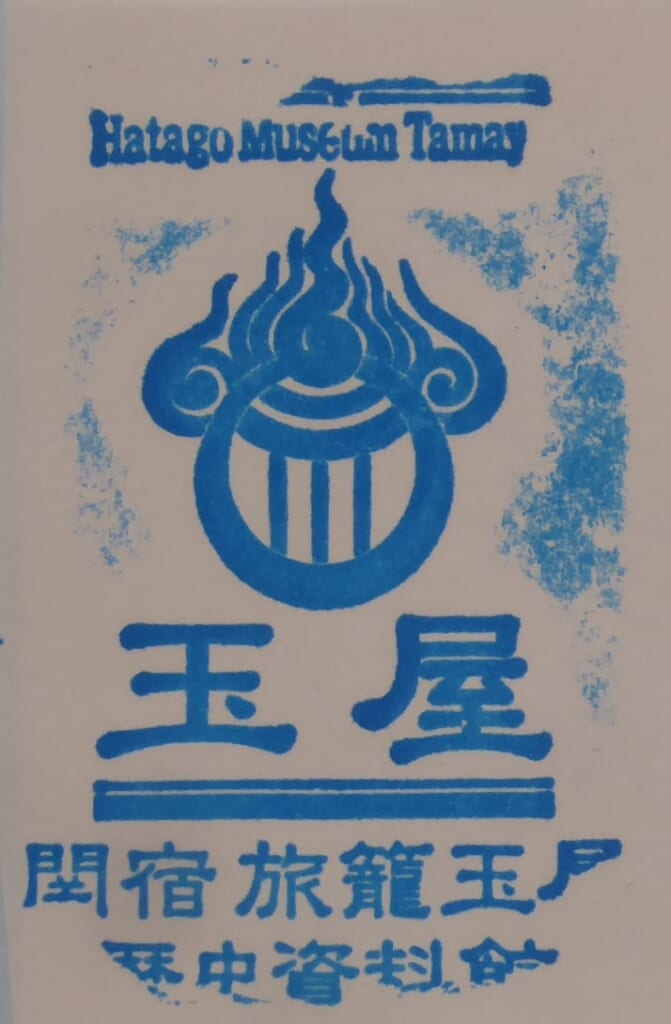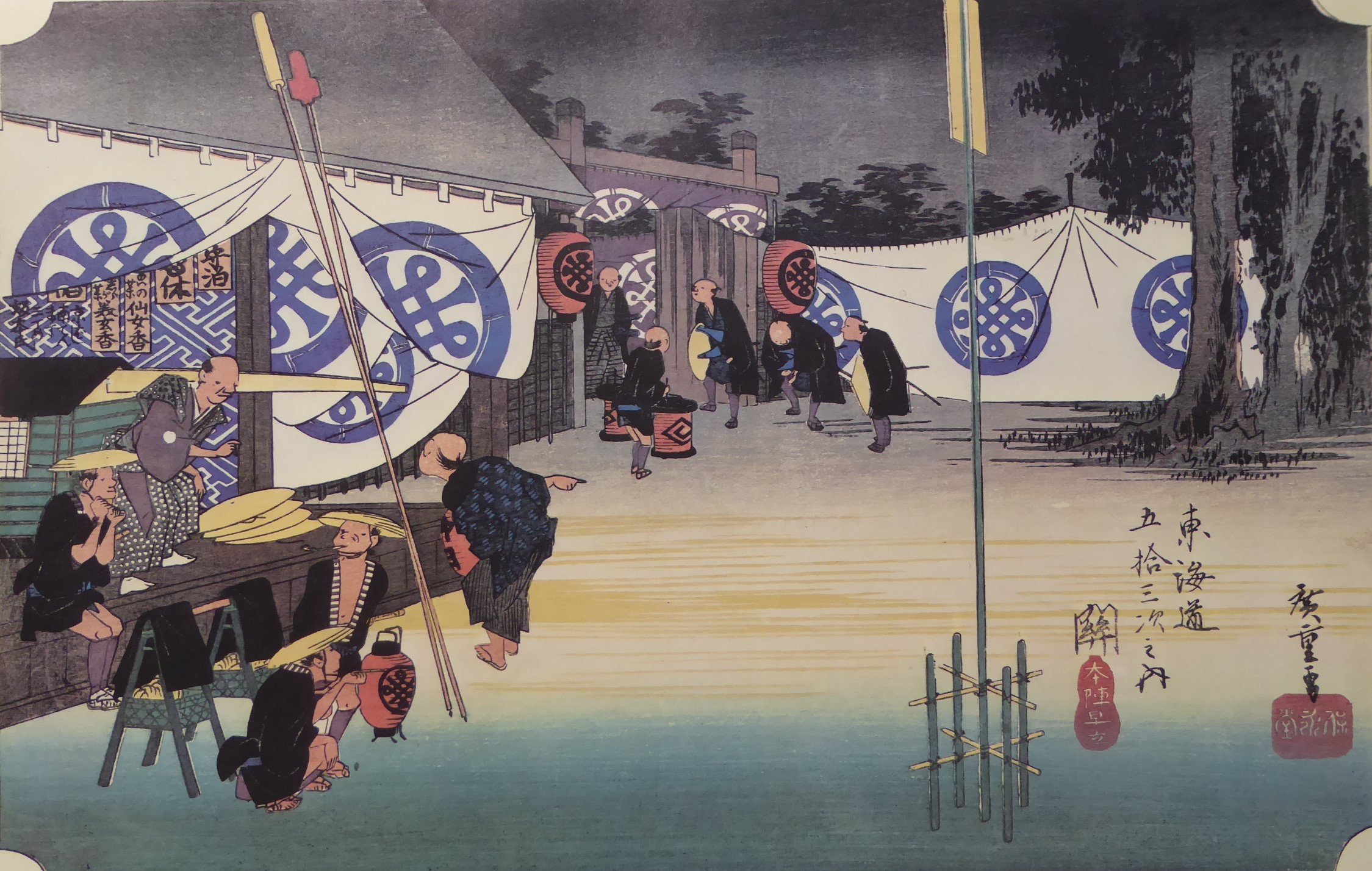Explanation of the Fifty-three Stations of the Tokaido 48 Seki
6.5km from Shimojuku in Saka to Sekijuku, 34°53’19″N 136°21’15″E
Currently Seki-cho, Kameyama City, Mie Prefecture.
It is located at the foot of the Suzuka Mountains, in the northwestern edge of Mie Prefecture.
It is the 47th post station of the Fifty-three Stations of the Tokaido.
Suzuka Barrier is one of the three Seki stations, along with Osaka Barrier and Fuwa Barrier in Kinai.
The townscape of the past has been preserved, and it has been selected as an Important Preservation District for Groups of Traditional Buildings by the country.
It has also been selected as one of the “100 Best Roads in Japan.” The sight of about 200 town houses from the Edo to Meiji periods lined up in a row is a spectacular sight.
It is located at the foot of the Suzuka Mountains, in the northwestern edge of Mie Prefecture.
Sekijuku, which stretches for about 1.8km, branches off from the Oiwake in the west to the Yamato Kaido, and from the Oiwake in the east to the Ise-betsu Kaido.
During the Edo period, these roads were bustling with people traveling, and prospered as transportation hubs for sankin-kotai (alternate attendance) and pilgrimages to Ise.
At the time, popular among travelers were Fukagawaya’s famous confectionery “Seki no To” and “Shiradama,” a rice cake filled with smooth bean paste, revived by Maeda Confectionery.
Fukagawaya’s famous confectionery “Seki no To” was delivered all the way to the Omuro Imperial Palace in Kyoto.
These two establishments are still in business today.
As for the “hatago,” “Tamaya” was such a large inn that a chant was sung: “If you’re staying at Seki, choose Tsuruya or Tamaya, but if you’re staying further, choose Aizuya.”
Currently, valuable Edo period inn architecture is exhibited, along with tools and travel documents from the time.
① “Hoeido version”
This painting depicts the “Honjin Hayatachi,” an early morning departure from the main inn.
The expressions of the palanquin carriers as they get ready are lively.
The mechanism that makes the signboard in the foreground extend beyond the screen is interesting.
The tent is covered with the family crest.
This is a combination of the characters of Hiroshige’s family, the Tanaka family.
② “Gyousyo version”
It depicts a scene from a commoner’s inn.
An old woman is pulling the sleeve of a traveler in front of the store, and the two people on the right seem to be negotiating the price.
In the center, a traveler is washing his feet in a bucket.
③ “Reisyo version”
This is part of the pilgrimage route to Ise Shrine from the Kyoto direction. It features snowy scenery.
④ “Hokusai version”
The hall depicts a place called Jizo-sama.
The principal image, Jizo Bodhisattva, is said to have been the eye-opening Buddha of Zen master Ikkyu.
⑤ “Travel image”
This is a sign for the Nishi-no-oiwake.
⑥ “Stamp image”
This is a stamp from Tamaya Historical Museum.
“Hoeido version”
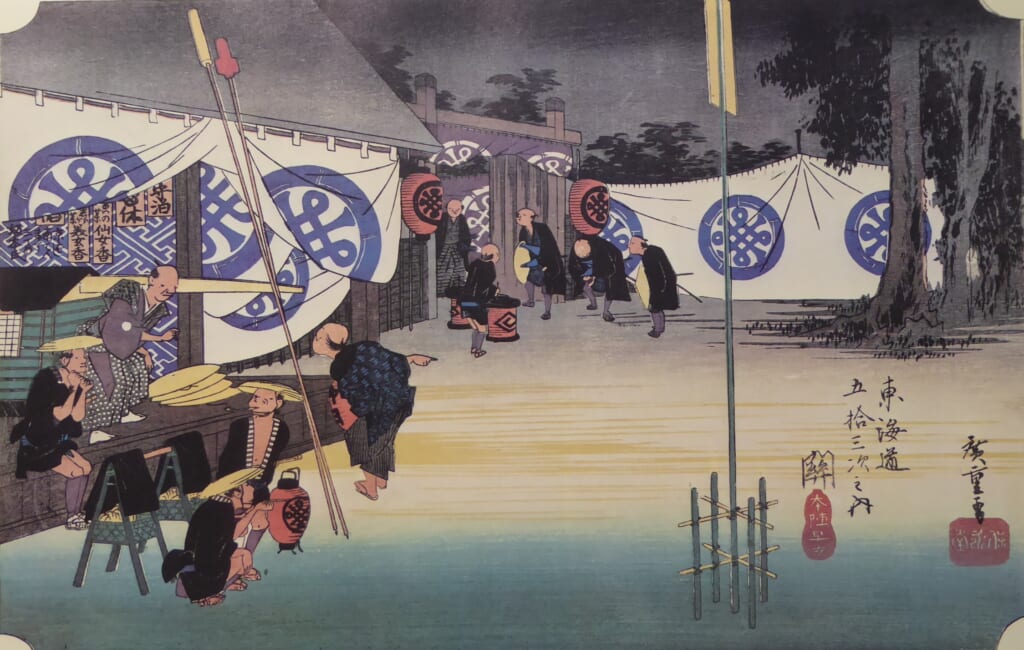
“Gyousyo version”
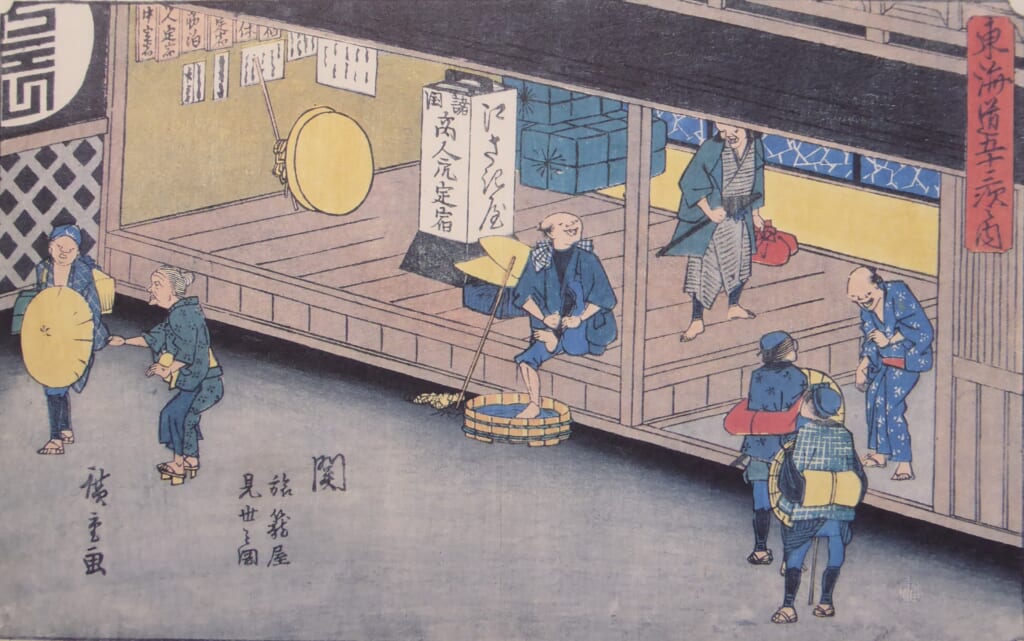
“Reisyo version”
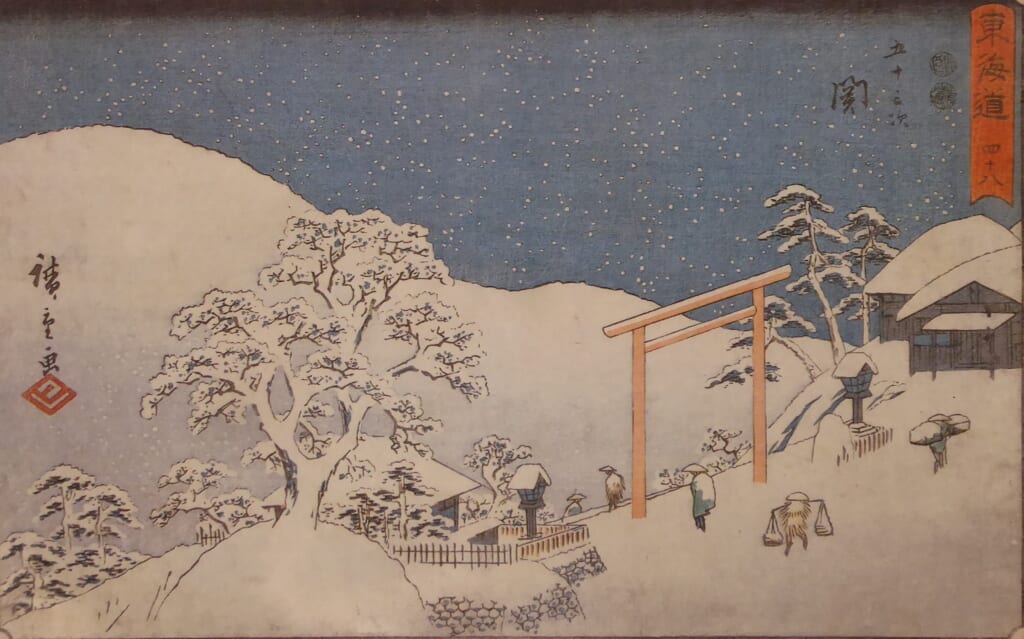
“Hokusai version”
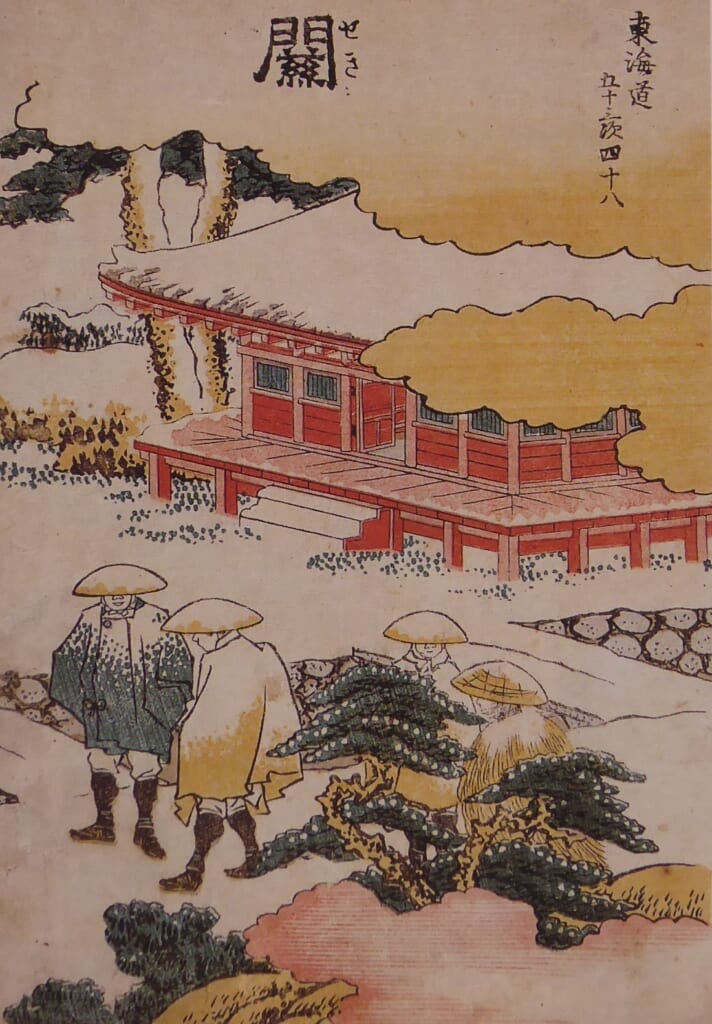
“Travel image”
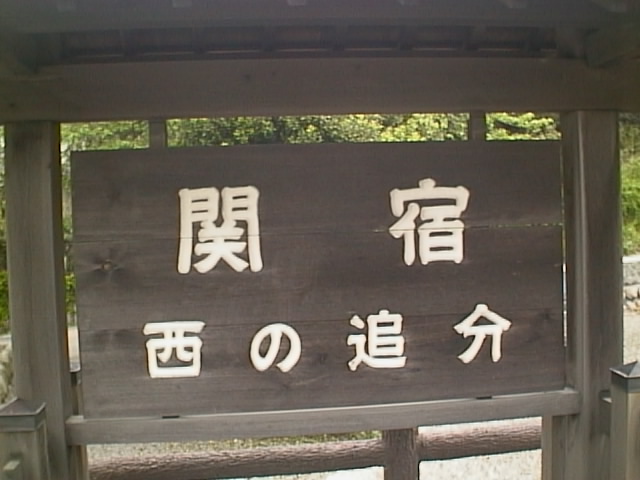
“Stamp image”
